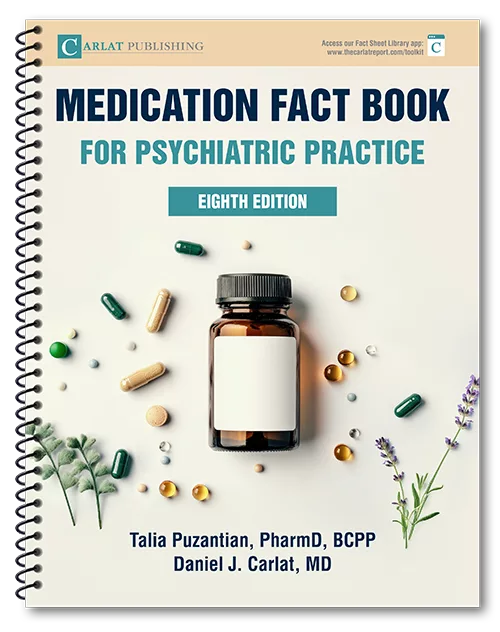Home » A Boatload of New Data on Stimulants and Cardiac Events
A Boatload of New Data on Stimulants and Cardiac Events
February 1, 2012
From The Carlat Psychiatry Report
Daniel Carlat, MD
Editor-in-Chief, Publisher, The Carlat Report.
Dr. Carlat has disclosed that he has no relevant relationships or financial interests in any commercial company pertaining to this educational activity.
In 2006, an FDA panel recommended all manufacturers of stimulants to add a “black box” warning about an increased risk of “serious cardiovascular events.” Ultimately, the FDA did not require the warning, and instead recommended that manufacturers of stimulant medications add label warnings regarding the risk of sudden death in patients with known cardiac abnormalities. Not all manufacturers have added the warning, but the issue was newsworthy and certainly gave plenty of patients (and their doctors) some pause about using the medications. Since then, a handful of studies have been published to try to clarify whether any real risk exists, and if so, how serious it is.
In the July/August 2009 issue of TCPR, we reviewed one such study implying that methylphenidate (Ritalin) can be a risk factor for sudden death in children. After reviewing the methodology, we concluded that the study was not particularly convincing for various reasons, including the possibility of recall bias. (To read our review, see TCPR, July/ August 2009.) Recently, three more large studies were published that pertain to the issue of cardiac safety of stimulants, and they are reassuring.
The first study was funded by Shire, makers of Adderall and other stimulants (Schelleman H et al, Pediatrics 2011;127(6):1102–1110), while the other two were funded by the FDA and the Agency for Healthcare Research and Quality (Cooper WO et al, N Engl J Med 2011; 365(20):1896–1904; Habel LA et al, JAMA 2011;306(24):online ahead of print). All three studies came up with similar conclusions—namely, that stimulants probably do not cause cardiac death in either children or adults—and if they do, the risk is very small.
Two of the studies focused on children or adolescents, while one focused on young and middle-aged adults. All three studies were historical prospective studies whereby authors used a retrospective research technique to figure out whether people who were exposed to stimulants had more of a risk of cardiac problems than those who were not exposed. Of course, the best way to answer this question would be to do a randomized controlled trial—randomly assign patients to stimulants vs placebo and see whether stimulants cause more arrhythmias and death. The problem is that such serious side effects are so rare that you would have to do an impossibly large study to find an effect, especially in children. Estimates of the baseline rate of sudden cardiac death in kids are about one out of every 30,000. So even if stimulants doubled the sudden death rate (very unlikely), to discover such an effect, you’d have to assign at least 30,000 kids to each group, and probably a whole lot more. And if stimulants had a more subtle cardiac effect, which is more likely, you’d need a lot more subjects than that.
What is a “retrospective cohort study”This type of study is especially helpful when trying to determine if a treatment is associated with uncommon side effects. Researchers will identify two “cohorts,” or “populations,” of interest (such as people exposed to a medication vs those unexposed), and retrospectively comb through medical records to compare side effect rates. Results will be reported in terms of risk ratios (RR) or odds ratios (OR) for an adverse event
Then the researchers compared rates of sudden cardiac death and other cardiac catastrophes in the two groups. Their results? Basically, they found extremely low rates in both groups, and no statistically significant differences between them. While this sounds reassuring, the authors of both articles acknowledge that the death rates were so extremely low that their estimates were necessarily imprecise, so imprecise that, according to the Schelleman abstract, they “have limited ability to rule out relative increases in rate.”
The Schelleman paper included another methodological problem, which was that they measured the effect of relatively short term use of stimulants—the median follow-up time was 135 days after initiation of a drug. The Cooper paper, on the other hand, had much longer follow-up, an average of 2.1 years. In the real world, of course, kids remain on these drugs for many years at a time, and the Cooper study was particularly reassuring in that no excess cardiac events were apparent during a realistic period of follow up.
The paper focusing on adults didn’t require quite as large an “n” because cardiac events are more common in this population. The Habel study, which examined records of adults 25 through 64 years old, compared 150,000 adults who were prescribed stimulants with 300,000 nonusers. Like the other two studies, there was no evidence of a link between stimulants and cardiac events.
TCPR Verdict:
While the results of these studies do not absolutely prove that stimulants are “safe,” they are reassuring. From a practical perspective, we are often faced with the decision of whether to order an EKG before prescribing stimulants. Various professional organizations have waffled a bit on this one—but the latest recommendations for children from the American Association of Pediatrics (and endorsed by American Academy of Child and Adolescent Psychiatry) are the following: 1. Get a careful cardiac history and do a physical exam; and 2. Do not order a baseline EKG unless the history or exam implies a potential cardiac problem (Perrin JM et al, Pediatrics 2008;122(2):451–453).
General PsychiatryIn the July/August 2009 issue of TCPR, we reviewed one such study implying that methylphenidate (Ritalin) can be a risk factor for sudden death in children. After reviewing the methodology, we concluded that the study was not particularly convincing for various reasons, including the possibility of recall bias. (To read our review, see TCPR, July/ August 2009.) Recently, three more large studies were published that pertain to the issue of cardiac safety of stimulants, and they are reassuring.
The first study was funded by Shire, makers of Adderall and other stimulants (Schelleman H et al, Pediatrics 2011;127(6):1102–1110), while the other two were funded by the FDA and the Agency for Healthcare Research and Quality (Cooper WO et al, N Engl J Med 2011; 365(20):1896–1904; Habel LA et al, JAMA 2011;306(24):online ahead of print). All three studies came up with similar conclusions—namely, that stimulants probably do not cause cardiac death in either children or adults—and if they do, the risk is very small.
Two of the studies focused on children or adolescents, while one focused on young and middle-aged adults. All three studies were historical prospective studies whereby authors used a retrospective research technique to figure out whether people who were exposed to stimulants had more of a risk of cardiac problems than those who were not exposed. Of course, the best way to answer this question would be to do a randomized controlled trial—randomly assign patients to stimulants vs placebo and see whether stimulants cause more arrhythmias and death. The problem is that such serious side effects are so rare that you would have to do an impossibly large study to find an effect, especially in children. Estimates of the baseline rate of sudden cardiac death in kids are about one out of every 30,000. So even if stimulants doubled the sudden death rate (very unlikely), to discover such an effect, you’d have to assign at least 30,000 kids to each group, and probably a whole lot more. And if stimulants had a more subtle cardiac effect, which is more likely, you’d need a lot more subjects than that.
What is a “retrospective cohort study”This type of study is especially helpful when trying to determine if a treatment is associated with uncommon side effects. Researchers will identify two “cohorts,” or “populations,” of interest (such as people exposed to a medication vs those unexposed), and retrospectively comb through medical records to compare side effect rates. Results will be reported in terms of risk ratios (RR) or odds ratios (OR) for an adverse event
Hence, researchers have had to resort to fancy and complicated epidemiological studies. In the Schelleman study, for example, the authors mined data from Medicaid and private health insurance claims and analyzed data on 241,417 children ages three to 17 with a prescription for an amphetamine, atomoxetine (Strattera), or methylphenidate and matched each of them with up to four nonusers of ADHD medications (n = 965,668). The numbers were similar in the Cooper paper, with data on a total of 1,200,438 children and young adults two to 24 years old (some were exposed to stimulants, others were matched controls).
Then the researchers compared rates of sudden cardiac death and other cardiac catastrophes in the two groups. Their results? Basically, they found extremely low rates in both groups, and no statistically significant differences between them. While this sounds reassuring, the authors of both articles acknowledge that the death rates were so extremely low that their estimates were necessarily imprecise, so imprecise that, according to the Schelleman abstract, they “have limited ability to rule out relative increases in rate.”
The Schelleman paper included another methodological problem, which was that they measured the effect of relatively short term use of stimulants—the median follow-up time was 135 days after initiation of a drug. The Cooper paper, on the other hand, had much longer follow-up, an average of 2.1 years. In the real world, of course, kids remain on these drugs for many years at a time, and the Cooper study was particularly reassuring in that no excess cardiac events were apparent during a realistic period of follow up.
The paper focusing on adults didn’t require quite as large an “n” because cardiac events are more common in this population. The Habel study, which examined records of adults 25 through 64 years old, compared 150,000 adults who were prescribed stimulants with 300,000 nonusers. Like the other two studies, there was no evidence of a link between stimulants and cardiac events.
TCPR Verdict:
While the results of these studies do not absolutely prove that stimulants are “safe,” they are reassuring. From a practical perspective, we are often faced with the decision of whether to order an EKG before prescribing stimulants. Various professional organizations have waffled a bit on this one—but the latest recommendations for children from the American Association of Pediatrics (and endorsed by American Academy of Child and Adolescent Psychiatry) are the following: 1. Get a careful cardiac history and do a physical exam; and 2. Do not order a baseline EKG unless the history or exam implies a potential cardiac problem (Perrin JM et al, Pediatrics 2008;122(2):451–453).
KEYWORDS adhd pharmaceutical_industry

Issue Date: February 1, 2012
Table Of Contents
Recommended
Newsletters
Please see our Terms and Conditions, Privacy Policy, Subscription Agreement, Use of Cookies, and Hardware/Software Requirements to view our website.
© 2026 Carlat Publishing, LLC and Affiliates, All Rights Reserved.


_-The-Breakthrough-Antipsychotic-That-Could-Change-Everything.webp?t=1729528747)



